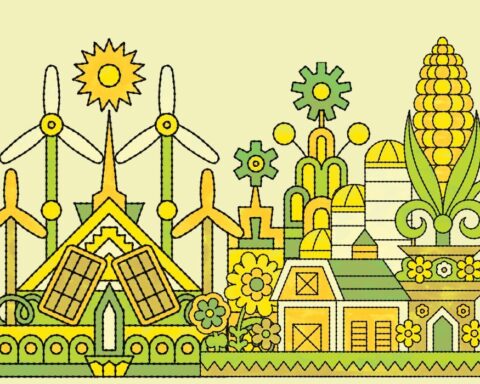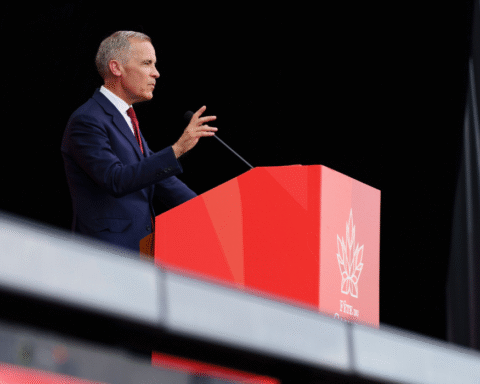Who is the greenest U.S. president in history? That’s the question we put to 12 leading environmentalists and environmental groups, each of whom were asked to rank their top three choices. It might seem an unfair question. Insoluble, even. What counts as “green”? Is it love of nature or legislation passed? Do good intentions count or are results all that matter?
Given these conundrums, the results revealed a surprising degree of consensus. In our tally of votes, there was a clear winner – one president who dominated with 28 points. Second and third received about half that, with 15 and 13 respectively. Fourth place fell to seven points, fifth to just three. Of 44 U.S. presidents, just eight received a vote. It seems environmentalists agree on these matters.
The list of U.S. presidents known primarily for environmental efforts is extremely short – which is to say, there’s no one on it. But if one comes close, it is America’s 26th president, Theodore “Teddy” Roosevelt, who handily won our survey. As an asthmatic, home-schooled child, Roosevelt collected samples of flora and fauna and pored intently over books on natural history and zoology. Through exercise and enterprise he became an explorer, cowboy, soldier, policeman, governor and president, but it was hunting that most fueled his love of wilderness.Many wealthy people of the time joined elite hunting clubs and affected an aesthetic appreciation for nature, but Roosevelt took seriously the notion that America’s natural wonders are not a luxury good but a common inheritance of its people, to be preserved across generations. “A grove of giant redwoods or sequoias should be kept just as we keep a great and beautiful cathedral,” he said. (He was not the first naturalist in the office, of course. Thomas Jefferson, who ranked fifth in our survey, “recognized that the natural heritage of the North American continent was one of its greatest assets,” said Todd Shelton of the World Wildlife Fund, “and strove to understand and catalogue it.”)
The task Roosevelt set for himself wasn’t easy. Powerful timber and mining interests bridled at the notion of putting land off limits. Congress wanted to open the Grand Canyon to mining. “Roosevelt was facing enormous opposition from robber-barons at the time, huge corporations that had very little public oversight,” said Frances Beinecke, president of the Natural Resources Defense Council. “And he stood up to them for the good of the country.”
On March 14, 1903, Roosevelt signed an executive order establishing the first national wildlife refuge in Florida’s Pelican Island. With that, he launched a streak of conservationist accomplishments unrivaled since. By the time he left office in 1908, he had set aside 150 national forests, 51 federal bird reservations, 18 national monuments and five national parks, which he treasured for their “essential democracy.” He protected an astonishing 230 million acres – 10 per cent of the entire United States land area.
America now boasts 58 national parks, with wildlife refuges in all 50 states, overseen by the U.S. Fish and Wildlife Service, for which Roosevelt is also responsible. The Grand Canyon was not mined. It became a national monument.
As a vigorous outdoorsman, Roosevelt was a proud, vocal champion of the first phase of U.S. environmentalism: conservation, aimed at protecting tracts of wild land from industrialization. The second phase of U.S. environmentalism – protecting people from industrialization, through public-health regulations – found a much less likely champion: our second place winner, Richard Milhous Nixon.
Suffice to say, Nixon was not a vocal champion of the environmentalism that sprang up alongside the counterculture movements of the ‘60s and ‘70s. He did not have Roosevelt’s passion for the natural world and wildlife. What he had was rivers on fire, air choked with pollution and 20 million people in the streets, demonstrating as part of the first Earth Day in 1970. Nixon had an embattled foreign policy agenda for which he was willing to trade domestic chits. And above all, he had a Democratic Congress. (He was the first president since 1848 to take office with the opposition controlling both houses of Congress.)
Whatever his intentions, Nixon would prove every bit as foundational to environmentalism as Roosevelt was to conservationism. “He may not have initiated,” said Kevin Knobloch, president of the Union of Concerned Scientists, “but he certainly signed many of the seminal environmental protections that have served Americans’ health and prosperity very well since.” The list of environmental bills put into law during Nixon’s tenure is almost numbing. Knobloch mentions the National Environmental Policy Act (which, among other things, created the White House Council on Environmental Quality), a powerful extension of the Clean Air Act, the Marine Mammal Protection Act, the Safe Drinking Water Act, the Federal Environmental Pesticide Control Act and the Endangered Species Act.
Most ironically, given the more than 200 votes today’s Republican House of Representatives have taken to block or curtail the agency’s power, Nixon, enemy of dirty hippies everywhere, created the Environmental Protection Agency (EPA).
The significance of the laws passed under Nixon is not just that they established clean air and water standards, but that they were designed as living systems, to be regularly updated to account for the latest science on public-health risks. The Clean Air Act recently added standards on carbon dioxide, which was not envisioned as a pollutant in Nixon’s time, but which science has subsequently shown is a threat to public health. Hundreds of species have subsequently been listed under the Endangered Species Act. The evolution of these core Nixon-era laws and institutions has set the course for U.S. environmentalism ever since.
If Nixon did a great deal for environmentalism without much caring about it, the legacy of our third-place winner, Jimmy Carter, is roughly the reverse. He cared a great deal, had grand ideas and ambitious proposals, but his intentions were often blunted by circumstances and poor execution.
This is not to say that the Carter administration yielded no environmental accomplishments. He signed the Alaska National Interest Lands Conservation Act, which created over 100 million acres of public land in Alaska, a third of which was designated wilderness area. The Superfund program to clean up toxic or contaminated areas was established under his watch. And Ralph Nader of Public Citizen mentioned his “pro-environmental appointments to the Environmental Protection Agency, the Occupational Safety and Health Administration, and the White House.”
But it was energy that consumed Carter, in both senses of the word. He took office during an energy crisis that lasted most of his one term. As a consequence, he was the first president to take seriously the risks posed by non-renewable, foreign energy sources. He called the quest for energy independence “the moral equivalent of war” and created a cabinet-level Department of Energy to manage it. And he signed two seminal pieces of legislation, the National Energy Act and the Public Utility Regulatory Policies Act, meant to encourage conservation and alternative energy sources like wind and solar (along with, less propitiously, ethanol and synfuels).
To demonstrate his seriousness, Carter put solar hot water panels on the White House and, famously, donned a sweater to ask Americans to reduce their personal energy use. “I haven’t seen any other president say that,” noted Robert Engelman, president of the Worldwatch Institute. Carter’s pitch was simple: “On the battlefield of energy we can win for our nation a new confidence, and we can seize control again of our common destiny.” Though the 1979 “malaise” speech has come to be known as an unpopular downer, contemporaneous polls showed it was received quite favorably; the White House was flooded with appreciative calls.
Unfortunately, alongside this important work, Carter was also imposing crude price controls on gasoline, fighting incessantly with Congress, presiding over a period of economic stagflation, watching helplessly as the Soviets invaded Afghanistan, and capping an excruciatingly long Iranian hostage crisis with a bungled rescue attempt. When Ronald Reagan swept him from office, the baby (investments in conservation, energy efficiency and renewable energy) went out with the bathwater (price controls). The solar panels were stripped from the White House roof.
Carter’s preoccupation with energy presaged the third wave of U.S. environmentalism – focused on creating a world beyond fossil fuels, though it was not until after his time in power that the danger of energy dependence was eclipsed by the even greater danger of global climate change. Today, all of the earth’s ecosystems, even those protected by Roosevelt and his successors, and all people, even those protected from local air and water pollution by Nixon and his successors, are at risk.
Global warming is a challenge greater than any past president has faced, which may explain the conflicted feelings of our panel toward fourth-place finisher Barack Obama. Environmentalists hoped that he would be the first climate champion in the Oval Office and have been bitterly disappointed as economic recovery, health care and financial reform pushed climate to the side. Many agree with Erich Pica, president of Friends of the Earth: “He’s much more interested in global economics than he is in the environment.”
Nonetheless, beneath the highly visible disappointment of a failed climate bill is a substantial record of green achievement. The stimulus bill put $80 billion toward clean energy, far and away the biggest investment in post-fossil energy in U.S. history. “That was huge,” said Van Jones, president of Rebuild the Dream and former White House green jobs czar. “Just on that alone, you have to put him on the list.” Add to that Obama’s work on new fuel-economy standards, which more than doubled for passenger vehicles and were established for the first time ever for medium- and heavy-duty trucks. The updated standards will likely produce the largest reduction in greenhouse gases of any single presidential act in U.S. history. Obama has also updated key Clean Air Act rules on mercury and sulfur dioxide and extended the act to cover carbon dioxide, which has helped reduce the role of carbon-heavy coal power in the electricity mix.
While it’s a lot, it’s nothing like enough. Presidents today must be “graded on a moving curve,” said Joe Romm, founder and editor of popular environmental blog Climate Progress. “We know more. And [Obama] knows better.”
Still, as Carter’s example demonstrates, a president’s commitment is far from sufficient. Obama did not devote himself to the climate challenge, even when he had a Democratic Congress. But even if he had, there’s little reason to think he could have marshaled the necessary votes from coal-state legislators in his own party. Now the House is held by Republicans, most of them refusing to recognize climate change is even happening and pushing to weaken existing environmental protections.
Nor is the public exercised enough about the climate to force their leaders’ hands. If there were 20 million Americans demonstrating for environmental progress in 1970, today almost 13 million are unemployed and the rest are battered by a decade of wars, financial crisis and political polarization. There is little appetite for ambitious new social programs and a great deal of political and financial power lined up against them.
The question is whether this state of affairs will change after November’s presidential election, and if so, in which direction?
Opinions are mixed on how Obama, if re-elected, would perform in a second term. “If I were to extrapolate the last four years to the next four years, I’m not expecting huge monumental environmental pushes,” said Pica of Friends of Earth. “Obama’s just been too cautious as a president.” Engelman of Worldwatch agreed Obama has played it safe, but he holds out hope the President will deliver on the green promises that helped get him elected in the first place.
And if Mitt Romney wins? As governor of a blue state, Massachusetts, Romney supported clean energy and said vaguely positive things about addressing climate change. But as presidential candidate, ahead of a party arrayed squarely behind fossil fuels and against climate science – and with a big chunk of campaign funding coming from oil money – Romney now proposes large-scale expansion of fossil-fuel production and seeks to diminish the power of the EPA. Is the green Romney still hiding in there?
“It’s an interesting question to speculate on,” said Engelman. “As environmentalists, we need to be thinking about how we would operate and what our priorities would be in a Romney administration.”
Time will tell. For now, when it comes to the clear and urgent dangers of climate disruption, it may be there simply hasn’t been a green president yet.








